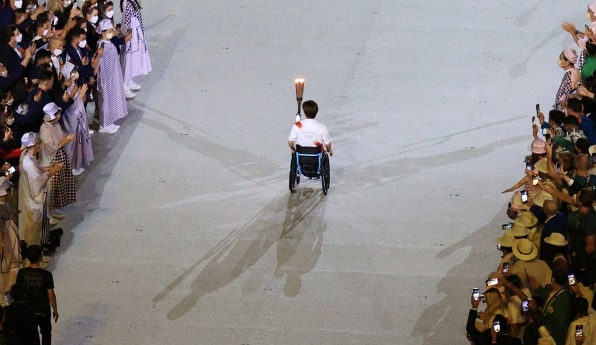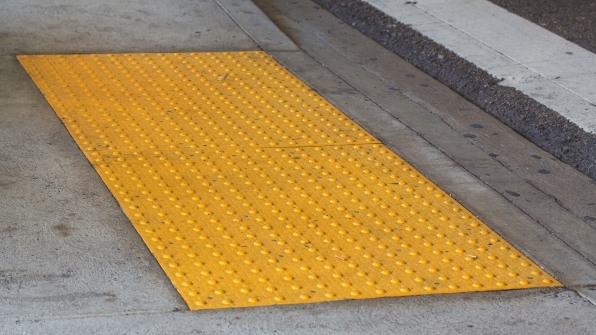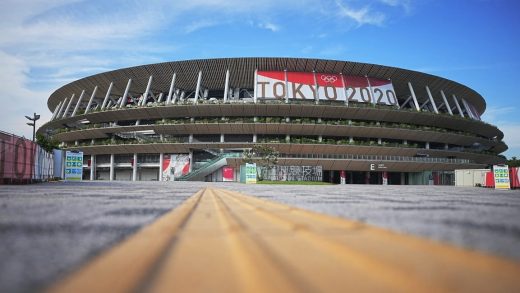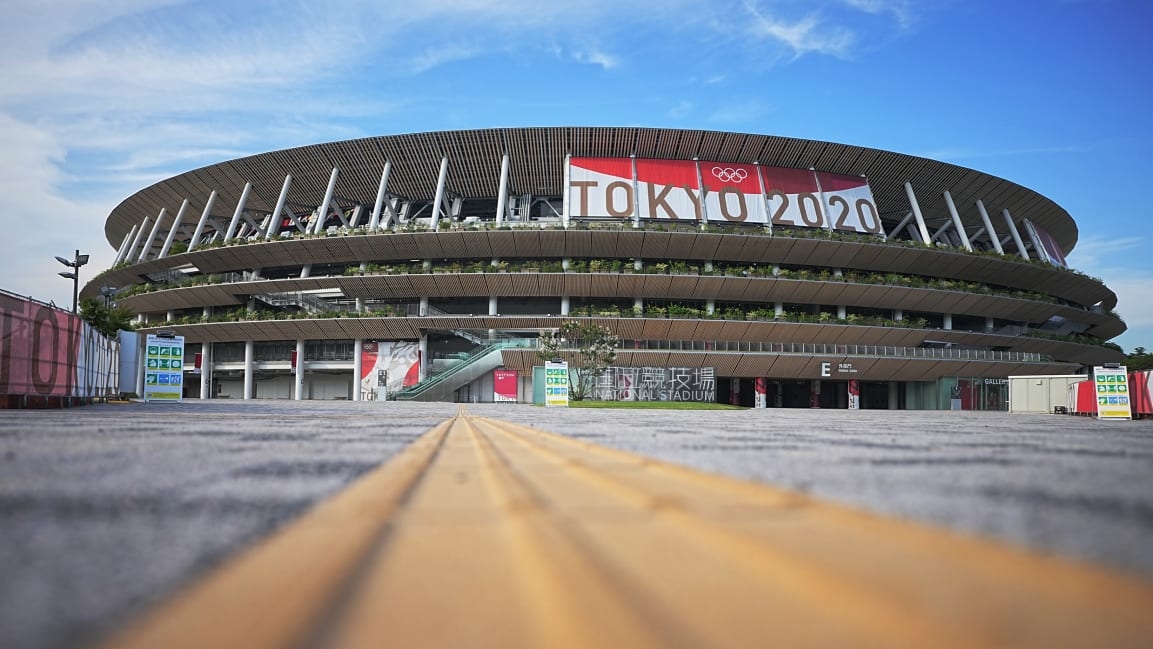The hidden way the Tokyo Olympics could forever change the city itself
Japan National Stadium in Tokyo was meant to be the enduring icon of the 2020 Summer Olympics. Designed by renowned architect Kengo Kuma and built in his traditionally inspired style using wood from each of Japan’s 47 prefectures, the stadium aspired to what Kuma describes as “a softer, or more feminine, design.”
Inside the icon, though, are a series of design details that represent an impact and legacy of the Olympics that could spread far beyond its doors. Accessibility features designed into the stadium, as well as shops, hotels, and transit stations throughout Tokyo, may be among the most tangible ways this unwanted, low-rated, and spectator-free Olympics makes an impact.
The stadium has bathrooms designed specifically to accommodate people with limited mobility, sight, and hearing. There are wheelchair-accessible seats that have unobstructed views of the field and outlets for recharging batteries. There are “calm down” rooms for people with sensitivities to excessive stimuli. These accessibility features are setting new standards in Japan for what’s known as universal design, according to Maiko Sugawara, a professor at Toyo University in Tokyo focused on barrier-free design in buildings and cities. “The influence on other buildings and stadiums is surely expected,” she writes in an email.
During the Olympic Games and the Paralympic Games that follow, these features, like the stadium they were designed into, will go unused. The pandemic-related closure of the Games to spectators means the universal design and accessibility elements will miss their high-profile debut. Yet even without the crowds of the opening ceremonies or the rush of foreign spectators, accessibility experts say these universal design elements could be among the positive legacies of this unusual event.
In Japan, the Olympics have a history of spurring accessibility improvements. When Tokyo hosted the Games in 1964, accessible design was still a nascent idea, and the event was a turning point for the country. It was the first time the Olympics were broadcast on television and just the second iteration to formally include Paralympic Games, which were then limited to sports played by people who use wheelchairs. The Paralympics served as a kind of national introduction to people with disabilities, and the high-profile focus was galvanizing.

[Photo: Sergei Bobylev/TASS/Getty Images]
“That was the start of disability awareness in Japan,” says Yoshito Dobashi, a visiting professor in the School of Regional Design at Utsunomiya University, north of Tokyo. Dobashi’s research focuses on accessibility in transportation, disability, and urban development; he himself was disabled in a car accident. He says that before the 1964 Olympics, the lack of accessible design meant that many people with disabilities were unable to take part in various aspects of civic life, and therefore were not often seen by the general public. After the Olympics, activists began pushing for more recognition of the needs of people with limited mobility, hearing, or sight, among other disabilities.
The movement grew, and led to the Japanese invention of one of the major touchstones of disability design, tactile paving. The now-common textured paving stones and blocks were developed to help guide vision-impaired pedestrians and notify them of dangers like the corner of a street or the edge of a train platform. Other improvements followed, and Dobashi notes that the 1990 passage of the Americans With Disabilities Act in the U.S. further accelerated the adoption of accessible design practices in Japan.

There are now dozens of specialized groups and organizations throughout Japan focusing on the needs and rights of people with disabilities that range from physical limitations to developmental challenges. Ahead of this year’s Olympics, many of these groups became involved in advising the design of accessibility features for the main stadium. Dobashi lists more than a dozen organizations that were involved in consultations, part of a growing trend among Olympic host cities.
Guidelines first developed for the 2012 Summer Olympics in London approached the Olympics and Paralympics as one singular event requiring the same accessibility standards. Based on this approach, the Tokyo 2020 Organizing Committee created a detailed set of guidelines for ensuring accessibility to the events as part of its hosting preparations. The guidelines include specific standards for assisting people who have limited mobility, vision, or hearing, as well as guidance for assisting people who have trouble conveying or understanding information. Similar accessibility planning is now a requirement for Olympic host cities.
Sugawara of Toyo University notes that these guidelines have also led to accessibility improvements in shop entrances and in hotels, which are now required to have a certain number of universally accessible rooms, as well as Japan’s famed Shinkansen bullet train system, which increased wheelchair spaces from two to six per train. Barrier-free design has also been prioritized in Tokyo’s public transit system, with better signage for wheelchair users and smaller gaps between platforms and train loading areas.
But accessibility experts say that Japan still has room for improvement. Satoshi Kose is a researcher on building use, safety, and universal design, and chairman of the International Association for Universal Design. He says aging buildings across the country are slow to implement accessibility features, and the aging and shrinking population in many areas has created economic challenges to infrastructure upgrades. “For new construction, universal design elements are becoming as a matter of fact, but renovation of existing buildings is a different matter,” he says.
Kose also worries that the impact of the Olympics will be limited. Notable accessibility elements like those developed for the Japan National Stadium may be outliers when it comes to new buildings in Japan. “They are just design recommendations, not legal requirements. Designers and owners tend to ignore recommendations—common happenings in every country, and the battle will continue,” Kose says.
Sugawara is equally pessimistic about the larger impact of the Games. Though the events have brought many improvements to Tokyo, they may not spread far. “These big changes look like Paralympic bubbles,” she says. “It is very doubtful whether the current positive situation will continue after Tokyo 2020.”
(47)



